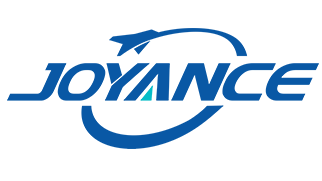Drone Technology In Agriculture
Views: 3 Author: Site Editor Publish Time: 2024-01-31 Origin: Site
![]()
The use of drones in almost every sector of the economy is growing fast, but drone usage in the agricultural industry is booming. According to some reports, the agricultural drone market is expected to grow from a $1.2 billion(USD) industry in 2019 to $4.8 billion in 2024. From scouting to security, drone use will become more ubiquitous on large and small scale farms in a few short years. The information gathered by drones on farms is often used to better inform agronomic decisions and is part of a system generally referred to as ‘precision agriculture’.
In many areas, drone use has become an essential part of large scale precision farming operations already. The data collected from drones recording fields help farmers plan their planting and treatments to achieve the best possible yields. Some reports indicate that using precision farming systems can increase yields by as much as 5%, which is a sizeable increase in an industry with typically slim profit margins.
In this article we will take a look at some of the areas where drone technologies are already being used on farms, some new agricultural drone technologies being explored, and we will touch on some of the steps and challenges to adopting widespread drone use in agriculture.
Scouting/Monitoring Plant Health
One of the uses for drone imagery that has already been rolled out with great success is for monitoring plant health. Drones equipped with special imaging equipment called Normalized Difference Vegetation Index (NDVI) use detailed colour information to indicate plant health. This allows farmers to monitor crops as they grow so any problems can be dealt with fast enough to save the plants. This image illustrates simply how NDVI works.
Drones using ‘regular’ cameras are also used to monitor crop health. Many farmers already use satellite imagery to monitor crop growth, density, and colouration, but accessing satellite data is costly and not as effective in many cases as closer drone imaging. Because drones fly close to fields, cloud cover and poor light conditions matter less than when using satellite imaging. Satellite imaging may offer to the meter accuracy, but drone imaging is capable of producing accurate image location to the millimetre. This means that after planting, areas with stand gaps can be spotted and replanted as needed, and disease or pest problems can be detected and treated for right away.
Monitoring Field Conditions
Drone field monitoring is also being used to monitor the health of soil and field conditions. Drones can provide accurate field mapping including elevation information that allow growers to find any irregularities in the field. Having information on field elevation is useful in determining drainage patterns and wet/dry spots which allow for more efficient watering techniques. Some agricultural drone retailers and service providers also offer nitrogen level monitoring in soil using enhanced sensors. This allows for precise application of fertilizers, eliminating poor growing spots and improving soil health for years to come.
Planting & Seeding
One of the newer and less wide spread uses of drones in agriculture is for planting seeds. Automated drone seeders are mostly being used in forestry industries right now, but the potential for more widespread use is on the horizon. Planting with drones means very hard to reach areas can be replanted without endangering workers. They are also able to plant much more efficiently with a team of two operators and ten drones capable of planting 400,000 trees a day.
Spray Application
Drone use to apply spray treatments is already widespread in south-east Asia, with South Korea using drones for approximately 30% of their agriculture spraying. Drone sprayers are able to navigate very hard to reach areas, such as steep tea fields at high elevations. Drone sprayers save workers from having to navigate fields with backpack sprayers, which can be hazardous to their health. Drones sprayers delivery very fine spray applications that can be targeted to specific areas to maximize efficiency and save on chemical costs. Currently drone sprayer regulations vary widely between countries. In Canada, they are not currently legal as more testing needs to be done to understand the impact of spray drift. Some regulation proposals recommend that only trained professionals be tasked with flying spray drones as is the case with Yamaha, who does not sell the spray drones they manufacture, but leases spray drone services complete with licenced operators.
Security
Drone security is a fast growing industry apart from agriculture but is also extremely useful to farm management. Using drones to monitor the far reaches of a farm without having to get there saves valuable time and allows for more frequent monitoring of hard to reach areas. Drone cameras can provide an overview of farm operations throughout the day to ensure operations are running smoothly and to locate equipment being used. Security drones can be deployed to monitor fencing and perimeters of more valuable crops like cannabis instead of employing more security personnel. Drone cameras are also being used in exciting ways to protect farm animals by locating missing or injured herd animals in far off grazing areas. Monitoring remote areas, which used to take hours of walking can now be completed in a few minutes.
CONTACT US
Phone/Wapp : +86 152 6961 6614
E-mail : sales@spreaderdrone.com




